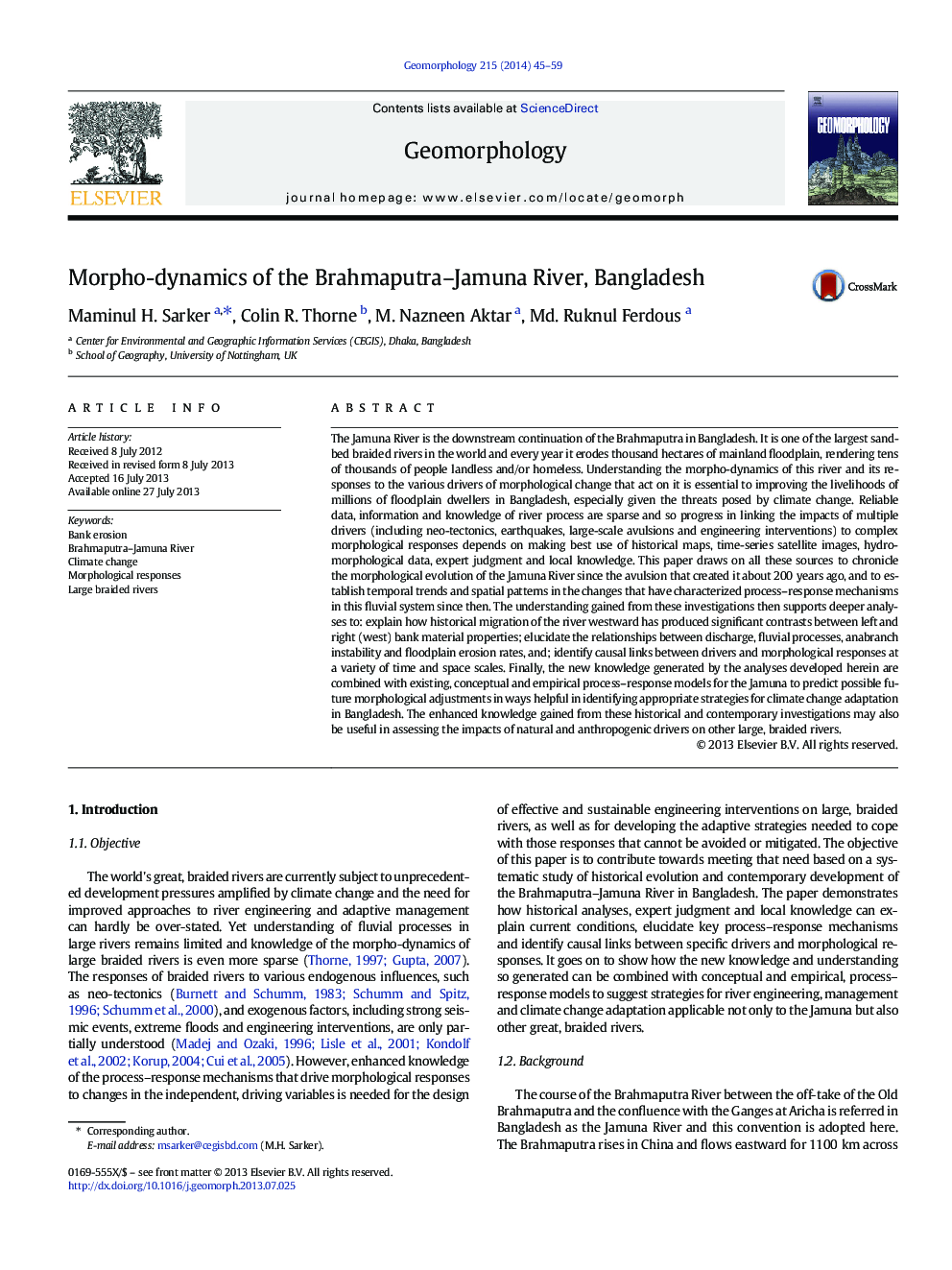| کد مقاله | کد نشریه | سال انتشار | مقاله انگلیسی | نسخه تمام متن |
|---|---|---|---|---|
| 4684504 | 1635434 | 2014 | 15 صفحه PDF | دانلود رایگان |

The Jamuna River is the downstream continuation of the Brahmaputra in Bangladesh. It is one of the largest sand-bed braided rivers in the world and every year it erodes thousand hectares of mainland floodplain, rendering tens of thousands of people landless and/or homeless. Understanding the morpho-dynamics of this river and its responses to the various drivers of morphological change that act on it is essential to improving the livelihoods of millions of floodplain dwellers in Bangladesh, especially given the threats posed by climate change. Reliable data, information and knowledge of river process are sparse and so progress in linking the impacts of multiple drivers (including neo-tectonics, earthquakes, large-scale avulsions and engineering interventions) to complex morphological responses depends on making best use of historical maps, time-series satellite images, hydro-morphological data, expert judgment and local knowledge. This paper draws on all these sources to chronicle the morphological evolution of the Jamuna River since the avulsion that created it about 200 years ago, and to establish temporal trends and spatial patterns in the changes that have characterized process–response mechanisms in this fluvial system since then. The understanding gained from these investigations then supports deeper analyses to: explain how historical migration of the river westward has produced significant contrasts between left and right (west) bank material properties; elucidate the relationships between discharge, fluvial processes, anabranch instability and floodplain erosion rates, and; identify causal links between drivers and morphological responses at a variety of time and space scales. Finally, the new knowledge generated by the analyses developed herein are combined with existing, conceptual and empirical process–response models for the Jamuna to predict possible future morphological adjustments in ways helpful in identifying appropriate strategies for climate change adaptation in Bangladesh. The enhanced knowledge gained from these historical and contemporary investigations may also be useful in assessing the impacts of natural and anthropogenic drivers on other large, braided rivers.
Journal: Geomorphology - Volume 215, 15 June 2014, Pages 45–59